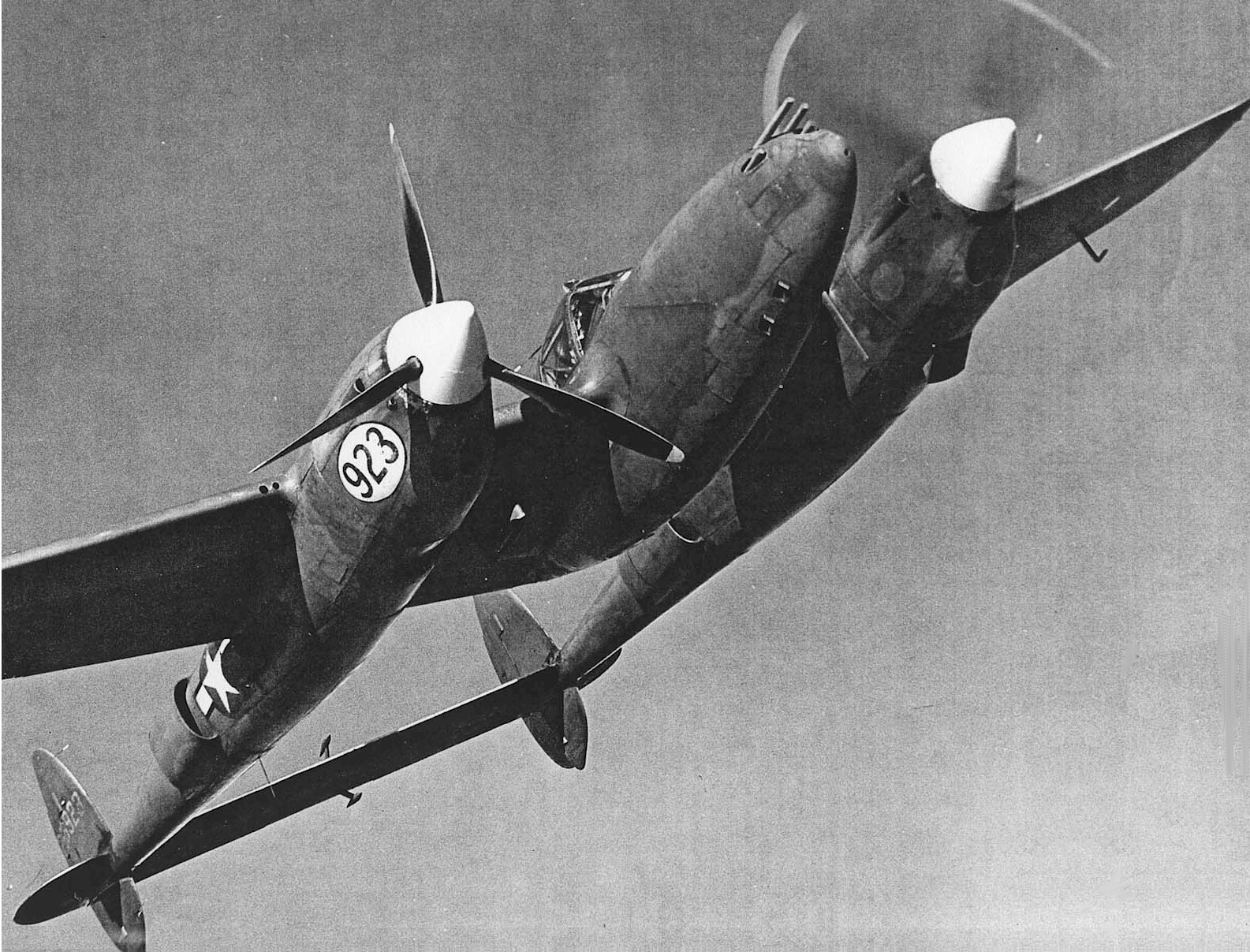
| Caption | P-38 Lightning aircraft in flight during a demonstration, AAF Tactical Center, Orlando, Florida, United States, 1944-1945, photo 1 of 3; many said this plane would be un-flyable with one engine lost ww2dbase | ||||
| Photographer | Unknown | ||||
| Source | ww2dbaseUnited States Air Force | ||||
| More on... |
| ||||
| Photo Size | 1,585 x 1,207 pixels | ||||
| Photos in Series | See all 3 photos in this series | ||||
| Added By | David Stubblebine | ||||
| Licensing | Public Domain. According to the United States copyright law (United States Code, Title 17, Chapter 1, Section 105), in part, "[c]opyright protection under this title is not available for any work of the United States Government". Please contact us regarding any inaccuracies with the above information. Thank you. |
Did you enjoy this photograph or find this photograph helpful? If so, please consider supporting us on Patreon. Even $1 per month will go a long way! Thank you. Share this photograph with your friends: Stay updated with WW2DB: |
Visitor Submitted Comments
2. Jeff says:
7 Jan 2011 05:10:20 PM
In a demonstration such as this they always feathered the right-side engine, because only the left side had a generator to run the electrics.
7 Jan 2011 05:10:20 PM
In a demonstration such as this they always feathered the right-side engine, because only the left side had a generator to run the electrics.
3.  Bill says:
Bill says:
21 Apr 2011 06:41:31 PM
CRITICAL TORQUE:
Losing an engine on takeoff rolling the
aircraft towards the live engine, rather than
the dead engine. Normal training in flying
twin-engine aircraft when losing an engine on takeoff would be to push the remaining engine to full throttle, in a P-38 the resulting critical torque would produce an uncontrollable asymmetric roll the aircraft
would flip over an slam into the ground.
Procedures were devised to allow a pilot to deal with this type of emergency situation
by reducing power on the running engine,
feather the propeller on the dead engine and
increasing power gradually until the aircraft was in stable flight.
Up until the later models of P-38s, only the left engine had a generator, so the left engine could become the critical engine,
electrical failure, would result if that engine were lost, this would cause problems with the right engines electrically-controlled propeller.
21 Apr 2011 06:41:31 PM
CRITICAL TORQUE:
Losing an engine on takeoff rolling the
aircraft towards the live engine, rather than
the dead engine. Normal training in flying
twin-engine aircraft when losing an engine on takeoff would be to push the remaining engine to full throttle, in a P-38 the resulting critical torque would produce an uncontrollable asymmetric roll the aircraft
would flip over an slam into the ground.
Procedures were devised to allow a pilot to deal with this type of emergency situation
by reducing power on the running engine,
feather the propeller on the dead engine and
increasing power gradually until the aircraft was in stable flight.
Up until the later models of P-38s, only the left engine had a generator, so the left engine could become the critical engine,
electrical failure, would result if that engine were lost, this would cause problems with the right engines electrically-controlled propeller.
All visitor submitted comments are opinions of those making the submissions and do not reflect views of WW2DB.
Search WW2DB
News
- » Wreck of USS Edsall Found (14 Nov 2024)
- » Autumn 2024 Fundraiser (7 Nov 2024)
- » Nobel Peace Prize for the Atomic Bomb Survivors Organization (11 Oct 2024)
- » Wreck of USS Stewart/DD-224 Found (2 Oct 2024)
- » See all news
Current Site Statistics
- » 1,150 biographies
- » 337 events
- » 43,917 timeline entries
- » 1,241 ships
- » 350 aircraft models
- » 207 vehicle models
- » 374 weapon models
- » 123 historical documents
- » 260 facilities
- » 470 book reviews
- » 28,539 photos
- » 432 maps
Famous WW2 Quote
"An appeaser is one who feeds a crocodile, hoping it will eat him last."Winston Churchill
Support Us
Please consider supporting us on Patreon. Even $1 a month will go a long way. Thank you!
Or, please support us by purchasing some WW2DB merchandise at TeeSpring, Thank you!
17 Aug 2010 10:10:12 AM
Added information to above photo:
Photograph taken at Elgin Field, Florida the USAAF test pilot rolls his P-38 into the dead engine.
During a demonstration flight, this type of
maneuver was to be avoided,but a well trained
pilot had no difficulity. All P-38H Models
were delivered in 1943.